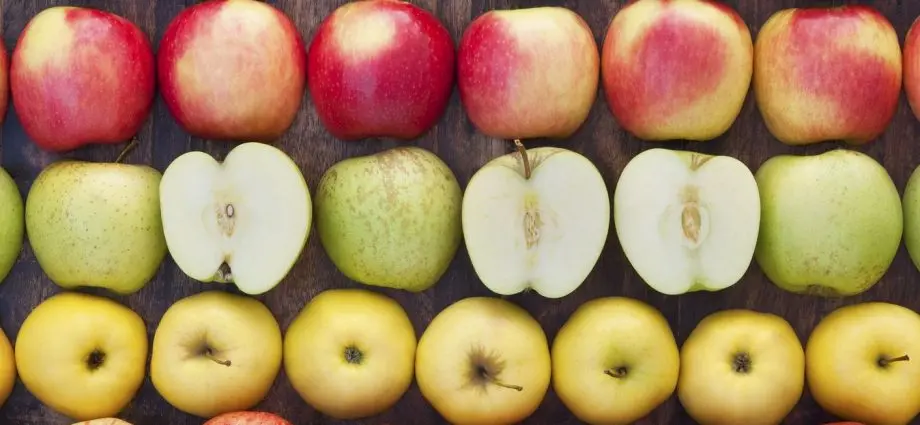Contents
There are three reasons why winter apple varieties are not popular with gardeners.
Firstly, late apples should be stored in the cellar, and not every city dweller has one.
Secondly, amateur gardeners often choose apples according to their taste: they will try it with a neighbor, like it, and plant the same variety on their site. This works with summer and autumn varieties, but it is impossible to evaluate winter apples during the summer season: after picking, they are rough and tasteless. For full ripeness, they need to lie down for a month or two, but the neighbors with their crops by that time are already moving to winter apartments and are out of the access zone.
And finally, as fruit growers assure, winter apples are in any case inferior in taste to summer and autumn ones.
Rating of the top 5 best varieties of winter apples according to KP
More than 160 winter varieties of apples are officially registered in Our Country (1), but only 5 have an excellent taste on the tasting scale.
1. Rtishchev’s firstborn
Evaluation: 5,0 points. Winter variety. The tree is medium in height, compact. The fruits appear on the 3rd – 4th year. Productivity is 400 kg per hundred square meters, annual. Apples are large, 160 – 200 g (maximum 500), yellow with a slight blush. Resistant to fungal diseases and tolerates drought in summer and severe frosts in winter.
Shelf life: until April – May.
Disadvantages: ovaries and fruits fall off during ripening.
Recommended for the Lower Volga region (2).
2. Kazanischenskoe
Evaluation: 5,0 points. Late winter variety. Tree of medium height, fast growing. Gives fruit in the 5th – 6th year. Productivity 200 – 300 kg per hundred square meters, annual. Apples are large, 180 g (maximum 360 – 400 g), sweet and sour, with a strong spicy aroma, excellent dessert taste. Resistant to fungal diseases.
Shelf life: till March.
Disadvantages: apples ripen for a very long time – they are removed on October 10 – 15. If the autumn is warm, they will gain the necessary mass and the necessary ripeness, and if the frosts begin early, there will be a serious crop shortage.
Recommended for cultivation in the North Caucasus region (2).
3. Bryansk
Evaluation: 4,8 points. Early winter variety. Tree of medium height, fast growing. The first harvest gives on the 3rd – 4th year. Productivity 270 – 350 kg per hundred square meters. Apples are large, on average 150 g (there are up to 300 g), sweet and sour, fragrant. The fruits do not fall off. The variety is almost not affected by scab.
Shelf life: until February.
Disadvantages: severely affected by fruit rot.
Recommended for the Central region (2).
4. Berkutovskoe
Evaluation: 4,8 points. Winter variety. The tree is not tall and does not grow very fast. The first harvest gives on the 2nd – 3rd year. Apples are large, on average 150 g (maximum 250 g), sweetish-sour. The variety is winter-hardy and drought-resistant. Awarded with the gold medal of the All- Exhibition Center in 1991.
Disadvantages: affected by powdery mildew.
The variety is recommended for the Lower Volga region (2).
5. Bryansk golden
Evaluation: 4,8 points. Late winter variety. Tree of medium height, does not grow very fast. The first apples appear on the 5th – 6th year. The fruits are large (180 – 250 g), sweet and sour, with a slight spicy aroma. The variety is winter-hardy, resistant to scab and fruit rot.
Shelf life: I’m at home.
Disadvantages: gives a harvest in a year.
Recommended for cultivation in the Central region (2).
Popular questions and answers
Answered the popular questions of summer residents about varieties of apples agronomist-breeder Svetlana Mihailova.
What does apple taste rating mean?
• inedible – up to 3 points;
• mediocre – 3 – 3,7 points;
• good – 3,8 – 4,3 points;
• very good – 4,4 – 4,7 points;
• excellent – 4,8 – 5,0 points.
Can varieties recommended for one region be grown in another?
How to properly store apples?
• temperature – from -0,5 to 0 °C;
• air humidity – 85 – 96%.
Sources of
- State Register of Breeding Achievements https://reestr.gossortrf.ru/
- Federal State Budgetary Scientific Institution All- Scientific Research Institute of Fruit Crops Breeding // Catalog of varieties https://vniispk.ru/species/
- Dubrova P.F., Egorov V.I., Kamshilov N.A., Koroleva N.I. et al. Gardener’s Handbook, ed. Second // State publishing house of agricultural literature, Moscow, 1955 – 606 p.










